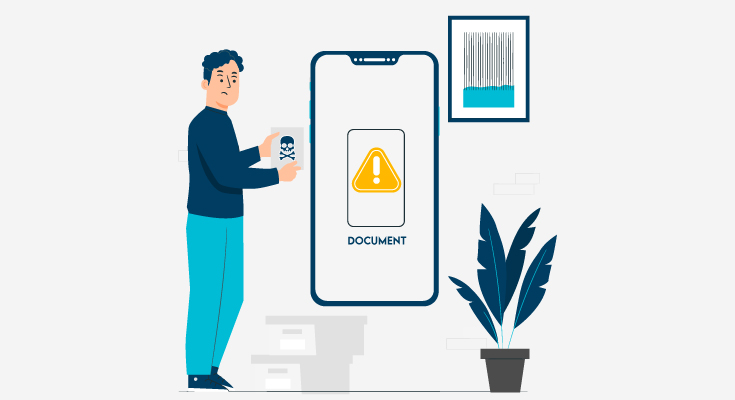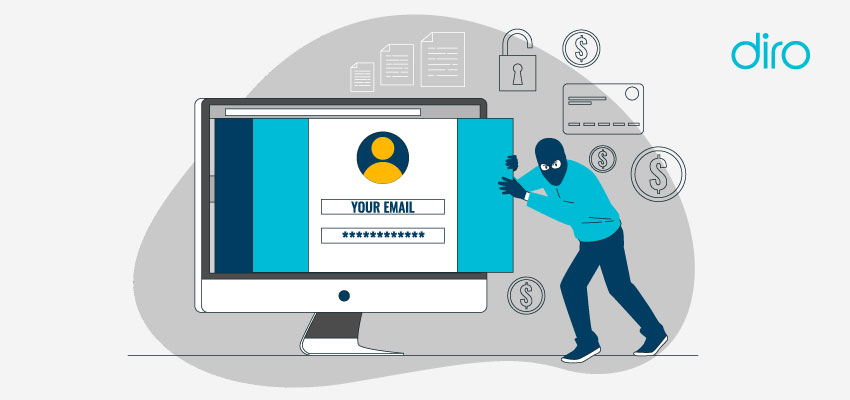Application fraud

Let’s just agree on one thing – digitization has changed the financial sector for the good. No more waiting hours, no more visiting brick-and-mortar locations, and the ability to do things instantly.
But, there’s a downside to doing everything digitally. Without face-to-face interaction, businesses become open to application fraud. As banks can’t see the person that’s behind the screen, fraudsters can easily commit fraud.
This is a challenge that financial institutions, realtors, creditors, and other businesses face every day. Even a miniscule miscalculation on the business’s end can lead to huge losses.
Fortunately, there are ways to protect businesses against application fraud. In this article, we’ll go over everything about application fraud.
What is Application Fraud?
Application fraud is when an applicant submits false information to a business for approval. This can include misrepresenting personal or financial information, including:
- Falsifying employment history
- Inflating income
- Providing fake ID documents
- Misrepresenting credit history
The biggest example of application fraud is when an individual for credit cards, loans, or other products. A fraudster would use fake information about their financial information, employment, or further relevant details.
If everything goes the fraudster’s way, they will have access to a credit card or a loan that they can use to conduct other financial frauds.
How do fraudsters get access to the fake information? Well, just in 2023, over 4.5 billion personal information records were stolen.
Technology has made it easier than ever to steal personally identifiable information.
How is Application Fraud Committed?
Consumers want instant financial services. So, banks, credit unions, and other financial institutions offer digital products to keep up with customer demands.
Processing online applications puts businesses at a risk of being defrauded. When a person applies for a credit line or loan, they expect a seamless process. To make this happen, companies offer fast approval times. These fast approval times lead to mistakes and invite fraudsters to commit third-party fraud.
When committing third-party fraud, criminals will fill out applications under someone else’s identity trying to trick the organization. If a fraudster has enough information at hand, they can trick the systems.
By the time the company or the individual figures out the fraud, it’s too late. Because of digitization, criminals can submit fraudulent information to as many companies as they want. This is only possible because of advanced tools like bots, cloud infrastructure, and virtual machines.
This is likely why loan application fraud is growing.
Common Methods Criminals Use for Application Fraud
There are a number of ways scammers use to commit application fraud. One of the most common ways is using synthetic identities.
It’s challenging to identify the type of fraud when businesses allow online application submission and application of ID documents. But how do scammers collect this personal information and commit application fraud?
1. Breaching Databases
Data breaches happen to businesses of all scales. Some happen intentionally, while others happen by accident. Accidents such as an employee can create an insecure password. Or leave the password at a place where anyone can access it.
It’s highly common for data breaches to happen when hackers blatantly target an entity to breach their database. Fraudsters use a number of technologies to break into a company’s database. They often use bots that insert millions of variations of a password to brute force a password.
Once a data breach happens, millions of data records can be stolen. Common data includes:
- Names
- Date of birth
- Addresses
- Phone numbers
- Account details
2. Targeting Call Centers
The Internet isn’t the only way criminals are stealing identities. One of the second most used methods is using call centers. Unfortunately, voice isn’t enough to determine someone’s identity, making it another easy target for fraudsters.
As there’s no way to detect synthetic identities or fraud patterns, criminals can easily use it to their advantage.
3. Intercepted Mails
Intercepting emails are more sophisticated than stealing envelopes from mailboxes and hoping to grab something valuable. Criminals today use USPS informed delivery while applying for credit cards. This is a service that USPS offers to allow users to track mails and packages before they are delivered.
This notifies the scammer when the credit card will be delivered so they can snatch it before the legit customer has a chance to see it.
4. Using Cloud Infrastructure
Criminals also use virtual spaces to commit identity theft and application fraud. This includes using the same cloud services businesses use daily. Fraudsters use the cloud to run automated scripts and bots to conduct large-scale fraud attacks.
Bots can also be used to brute force attacks by hacking into accounts by entering different variations of PINs and passwords. It’s not uncommon for fraudsters to search for available credentials. This is when fraudsters use a collection of personally identifiable information.
How to Detect and Prevent Application Fraud?
- Security Measures for In-House Personnel
Employees are the first line of defense against fraudulent attempts, so they should be educated about fraud applications. To detect and prevent application fraud, businesses should educate employees on:
- Common areas of fraud
- Scenarios where fraud happens the most
- Anti-money laundering training for our team
- Third-party verification of data
- Verify incorporation documents
- Verify underwriting data with third-party vendors
- Machine Learning Solutions
Artificial intelligence and machine learning are revolutionizing the industry. AI and ML technologies can make it possible for companies to detect and prevent various types of fraud. Financial institutions use rules engines and a mix of supervised and unsupervised machine learning.
But these technologies become outdated, so you need solutions that can evolve. If solutions are not updated, engines and rules-based systems can become susceptible to false positives.
- AI for Application Fraud Detection
Financial institutions also use AI-based document verification tools for fraud detection. Some AI solutions use existing data sets to verify information provided by customers.
This offers more efficient and ultimately automated document fraud leading to fewer loan write-offs. Using AI for fraud detection is excellent for organizations that process dozens or even thousands of applications every day. This leads to a lower risk of fraud and improves user experience.
Conclusion – Fight Application Fraud
Digital transformation is an ongoing trend for modern businesses. Organizations are becoming quick to adopt new technologies to streamline operations, improve customer experiences, and boost competition.
But as businesses increasingly rely on interconnected devices, the risk of fraud is also increasing. Application fraud poses huge risks to businesses, which can lead to huge financial and reputation losses.
Businesses should rely on all available methods such as DIRO to prevent application fraud. DIRO document verification verifies documents from the issuing source to prevent the use of fake and stolen documents. This helps businesses improve the entire onboarding process and reduce user experience.













